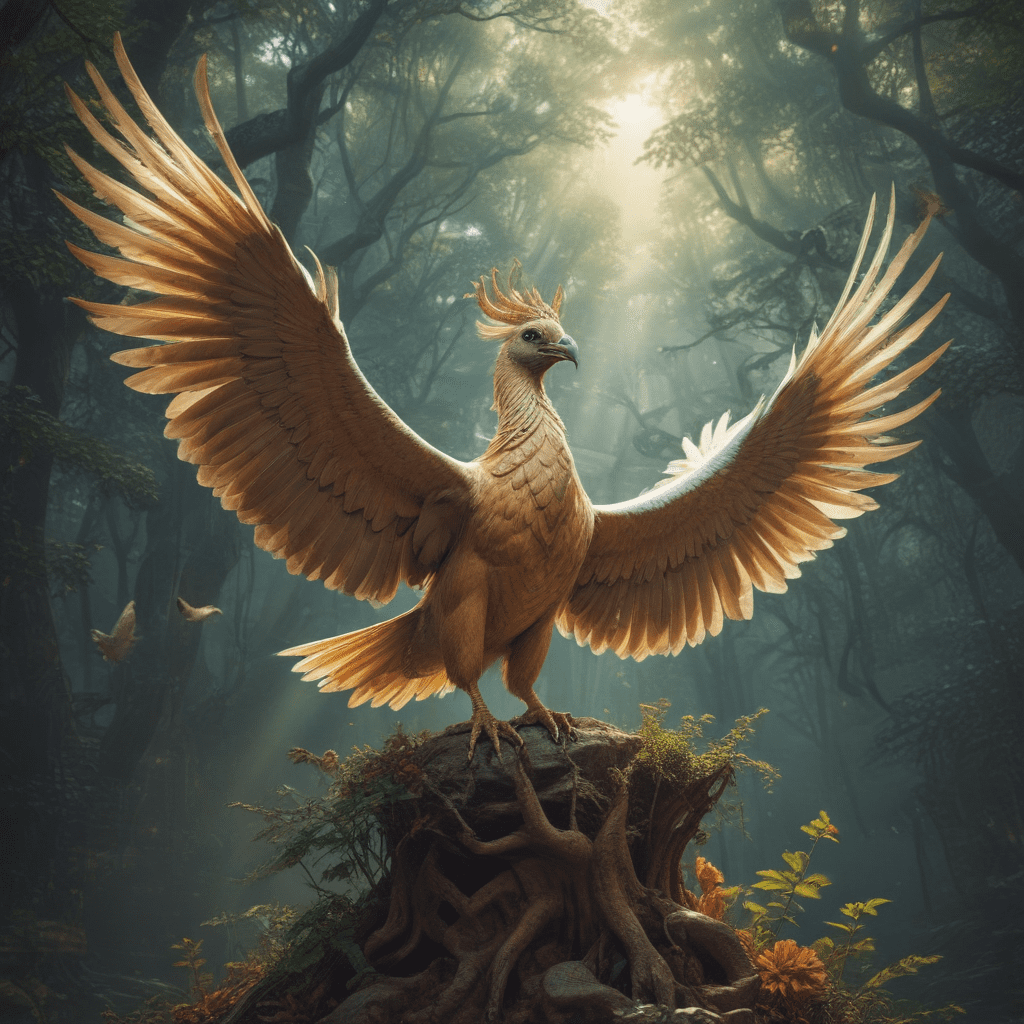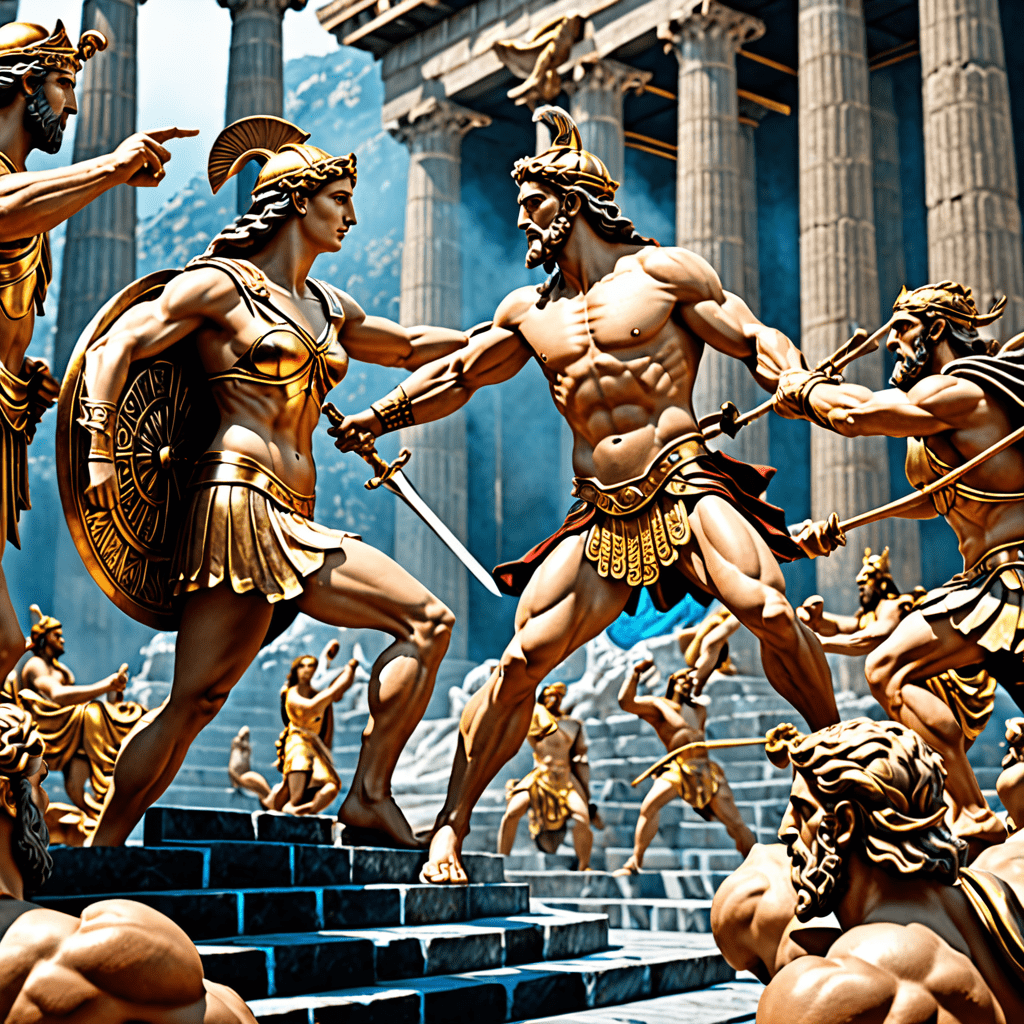Introduction: The Realm of Mythical Creatures
Ancient Hindu mythology is a tapestry of captivating tales, where the realm of the divine intertwines with the realm of the fantastical. Among its many wonders are the mythical birds, whose extraordinary powers and symbolic meanings have captivated the human imagination for centuries. Embodying virtues such as loyalty, wisdom, and divine power, these avian creatures played a pivotal role in the grand narratives of Hindu mythology, inspiring awe and a sense of wonder in the hearts of believers.
Garuda: The Divine Eagle of Vishnu
Garuda, the resplendent eagle, is a majestic deity in Hindu mythology, renowned as the mount of Lord Vishnu, the preserver of the universe. With his golden wings, piercing gaze, and unmatched strength, Garuda symbolizes divine power and protection. He is often depicted as a fierce warrior, vanquishing the forces of evil with his sharp talons and unrelenting spirit. Garuda's loyalty to Vishnu is unwavering, and he is considered an embodiment of courage and unwavering devotion.
Jatayu: The Loyal Friend of Rama
Jatayu, the valiant eagle, is a beloved figure in the epic Ramayana. As the loyal friend of Lord Rama, the hero of the epic, Jatayu valiantly defended Rama and his wife Sita from the clutches of the demon king Ravana. Despite being severely injured in the battle, Jatayu's unwavering loyalty and courage left an enduring mark on the narrative. His sacrifice symbolizes the power of friendship, honor, and selfless devotion.
Suparna: The Golden-Winged Bird of Heaven
Suparna, the golden-winged bird, is an auspicious symbol of heaven and the sun in Hindu mythology. Often depicted as a majestic eagle or a divine swan, Suparna represents the radiant power of the heavens and the boundless expanse of the universe. The bird's golden wings symbolize purity, light, and divine knowledge, inspiring a sense of awe and wonder in the hearts of believers. Suparna's soaring flight represents the pursuit of spiritual enlightenment and the aspiration to transcend the limitations of the mortal realm.
Hamsa: The Swan of Spirituality
Hamsa, the graceful swan, is a revered symbol of beauty, purity, and spirituality in Hindu mythology. Its elegant form and serene nature represent the journey of the soul towards enlightenment. The swan's ability to separate milk from water symbolizes its ability to discern truth from falsehood and to navigate the complexities of the material world. Hamsa is often associated with the goddess Saraswati, the patron deity of knowledge, music, and arts, representing the harmonious union of wisdom, creativity, and spiritual purity.
Mayuri: The Peacock Goddess of Dance
Mayuri, the enchanting peacock goddess, personifies the divine art of dance in Hindu mythology. With her captivating plumage and graceful movements, she represents the beauty, rhythm, and joy inherent in the universe. As a consort of Lord Krishna, the divine musician and dancer, Mayuri symbolizes the harmonious union of music and dance, inspiring a sense of wonder and devotion in the hearts of believers. Her dance is believed to possess the power to mesmerize the gods and mortals alike, captivating their senses and elevating their spirits.
Kurari: The Elusive Crane
Kurari, the enigmatic crane, is an elusive figure in Hindu mythology, often associated with the search for wisdom and truth. Its long, slender neck symbolizes the extended quest for knowledge and the unwavering pursuit of spiritual enlightenment. Kurari is often depicted standing in tranquil waters or perched on a remote hilltop, embodying serenity and contemplation. The crane's solitary nature represents the inward journey, the quietude and solitude necessary for deep introspection and communion with the divine.
Kalapa: The Eagle of Darkness
Kalapa, the formidable eagle of darkness, is a powerful and awe-inspiring figure in Hindu mythology. In contrast to Garuda, the divine eagle of Vishnu, Kalapa represents the destructive and chaotic forces of the universe. Its pitch-black plumage and menacing gaze symbolize the darkness that resides within the depths of creation. Kalapa is said to be a force to be reckoned with, its wings capable of obscuring the sun and its talons sharp enough to pierce through armor. It embodies the inevitability of death, destruction, and the relentless passage of time.
Bherunda: The Two-Headed Eagle
Bherunda, the enigmatic two-headed eagle, is a fascinating and unique figure in Hindu mythology. It is often depicted as a guardian of the heavens, perched at the entrance to the divine realm. Its sharp gaze and powerful talons symbolize its unwavering vigilance and the protection it offers to the gods and saints. Bherunda's dual heads represent the duality of existence, the balance between good and evil, light and darkness. The eagle symbolizes the eternal struggle between these opposing forces, a battle that rages both within the universe and within the individual soul.
Conclusion: The Enduring Legacy of Mythical Birds
The mythical birds of Hindu mythology continue to fascinate and inspire generations of believers and scholars alike. Their extraordinary powers, symbolic meanings, and captivating narratives have left an enduring legacy on Indian culture and spirituality. They embody the virtues of loyalty, courage, wisdom, and divine power, serving as reminders of the boundless creativity and profound wisdom that lies at the heart of human storytelling. These mythical creatures transcend the boundaries of time and culture, reminding us of the enduring power of imagination and the profound connection between humanity and the divine.
FAQs
What is the most powerful mythical bird in Hindu mythology?
- Garuda, the divine eagle of Vishnu, is considered the most powerful mythical bird in Hindu mythology.
Which mythical bird is known for its beauty and grace?
- Mayuri, the peacock goddess of dance, is renowned for her mesmerizing beauty and enchanting dance.
What does the crane symbolize in Hindu mythology?
- Kurari, the crane, represents the search for wisdom and truth, as well as serenity and contemplation.
Which mythical bird represents the forces of darkness?
- Kalapa, the eagle of darkness, symbolizes the destructive and chaotic forces of the universe, including death and destruction.
What is the significance of the two-headed eagle in Hindu mythology?
- Bherunda, the two-headed eagle, represents the duality of existence, the balance between good and evil, light and darkness, and the ongoing struggle between these opposing forces.



